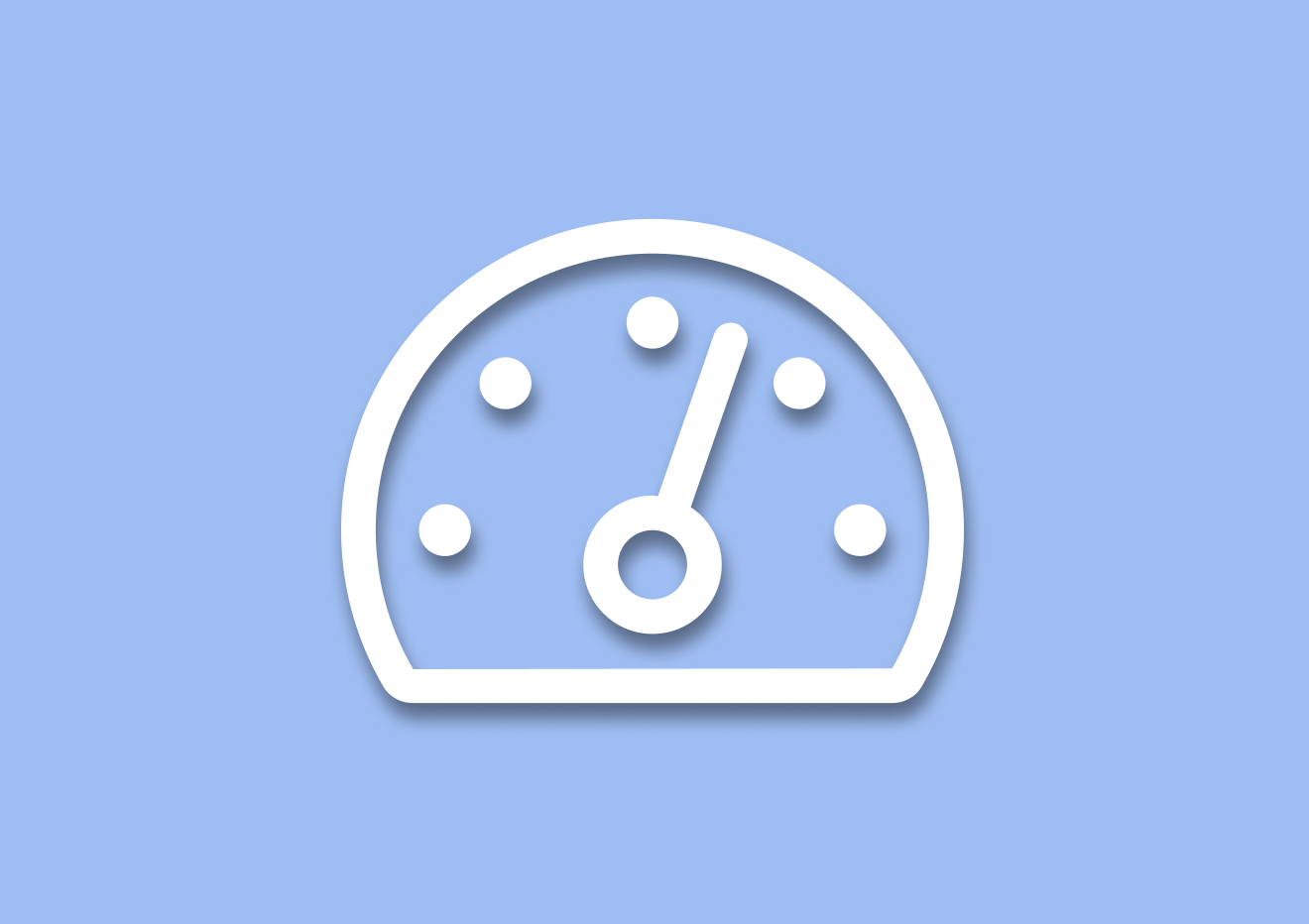How to Calculate NPS (incl. NPS Formula for Excel)
In this guide, I’ll show you how to calculate Net Promoter Score (NPS.) I’ll also give you the exact formula to use (also to calculate NPS in Excel)
So, let’s do it.
But why care about calculating NPS in the first place?
NPS is beyond critical; that goes without saying. But there’s also a fine line between focusing on improving the score just for the sake of getting a better result and actually driving your business forward.
In this article, I’ll show you how to do the latter – You’ll learn the exact NPS formula to help you calculate your net promoter score and identify how well your SaaS is doing. But also, I’ll show you how to use that score to improve the product and the business.
What is the NPS formula and how to use it to calculate NPS
NPS (a brainchild of Fred Reichheld, a partner at Bain and co.) is the ultimate weapon for knowing how your customers feel about your product.
It’s a metric that allows you to figure out how many of your customers love your SaaS to a point of being willing to rave about it and how many would prefer to tell negative stories about you.
Luckily, to calculate NPS, you don’t need to be a data analyst. All you need is the formula.
So let’s start with the basics.
NPS calculation formula & the math behind it
Let’s first see what the formula for NPS is and then decipher the math behind it.
Total % of promoters – Total % of detractors = NPS Score

Deciphering the math behind the NPS formula
Calculating the Net Promoter Score is a 6-step process.
Step 1: Ask a question to the customers you’re surveying. You can ask them a question like – On a scale of 1 to 10, how likely are you to recommend our app to others?
Step 2: After getting the results, segregate customers into promoters, passives, and detractors.
Step 3: Count the number of promoters by noting down how many customers gave you a rating of 9 or 10.
Step 4: Count the number of detractors by noting down the number of customers who gave you a rating between 0 and 6. The rest are passives.
Step 5: Calculate the percentage of promoters and detractors by dividing them by the total number of responses and multiplying it by 100.
Step 6: The final step is subtracting the percentage of detractors from promoters to get NPS.
You might be wondering who promoters, detractors, and passives are, right? Let me explain.
Getting to know promoters, detractors, & passives
Promoters, detractors, and passives are the customers who respond to the NPS survey you run. They do this based on their experience with your product and brand.
- Promoters: Promoters are the satisfied customers who give you a score of 9 or 10 in the NPS survey. They are loyal customers who will most likely refer your product to others.
- Detractors: These are unhappy customers who didn’t like your product or customer service and will give you a score between 0 and 6. Detractors will hurt your brand by sharing their negative experiences with others.
- Passives: Passives are customers who are neither happy nor sad with your product. They will give you a 7 or 8 in the NPS survey and won’t be referring your brand to anyone. There’s a good chance they might switch to a competitor for better pricing and customer experience.
3 NPS Formulas to Calculate Net Promoter Score (incl. Excel)
Now that you know about the NPS formula and the math behind it, let’s see the methods you can use to calculate it.
#1. NPS Excel Formula
Let’s start with the manual method.
For this one, you just need an Excel or Google sheet and your NPS data.
Step 1: Make an excel sheet with two tabs – NPS calculation and Survey Data.

Step 2: To calculate NPS, you need to know exactly how many customers are Promoters and how many are Detractors. To do so, we count the exact number of customers who fall in this category.
To do so, we use the formula countif(range,criterion).
Here, range = all the responses in the survey (the Survey Data sheet),
Criterion = Count the exact number of respondents for a score between 1 to 10
Enter the formula in the C10 column and calculate the count.
Pro tip: To cross-check if your formula is right, sum all the numbers you get in the count column; the sum should be equal to 500 (number of customers you surveyed).

Step 3: To calculate the actual Net Promoter Score, you need to know the % of Promoters and Detractors.

Finally, it’s time to plug in the percentages in the main formula.
% Detractors = Sum of all the percentages from 0 to 6
% Promoters = Sum of all the percentages from 9 to 10
%Promoters – %Detractors = – 45%

#2. Online NPS calculator
There are several NPS calculators online to make your life easy. The only input they want is the number of respondents giving you a score between 1 and 10.
Look at the NPS Calculator below:

All you have to do here is fill the column named ‘Enter number of respondents.’
After doing so, the calculator will give you the NPS.

Not only this, when you click on the blue desktop icon right below the Result tab, you can see a pie chart.
It shows you the percentage of promoters, detractors, and passives which you can download.

#3. Dedicated NPS survey tool with NPS calculation capabilities
Tools like Refiner (disclaimer: this is our tool) allow you to run NPS surveys, collect the data, and get the NPS score instantly in a beautiful dashboard.

The biggest benefit of turning to dedicated NPS software is that with the tool, you can customize every aspect of the survey to get high engagement rates.
- You can design highly-converting surveys and ask all kinds of NPS survey questions
- Measure customer satisfaction and customer loyalty through all the channels your customers use, in the product, email, or through a shareable link
- You can optimize each survey, segment your audience, run follow-up surveys, and more.
Refiner has pre-built templates for NPS surveys, and this saves you the time and burden to create surveys from scratch.
These templates are completely customizable; you can edit the color theme, widget position, and style to suit your brand.
Want to learn more? Check out Refiner in action here or sign up for a free trial.
Mistakes Companies Make When Calculating NPS
SaaS companies often try optimizing their NPS surveys to get better results, but in doing so, they might make mistakes that affect their survey quality.
Let’s look at some prominent mistakes made while calculating NPS.
#1. Trying new methods to get exact NPS
Calculating NPS is a simple process. Many companies tend to look for new techniques when calculating it. They do this to improve their score accuracy.
But NPS isn’t about knowing the absolute value; it’s about knowing what the score is actually telling you.
Knowing if your survey score is – 30 or 99 isn’t important, but knowing how you can improve your NPS and make your customers happy is important.
#2. Not giving customers enough break between surveys
When you give customers enough break between NPS surveys:
- Customers happily participate in every survey and give you fresh insights
- The marketing team can analyze the survey and gauge the performance accordingly
- You can engage with detractors and passives and make your product better for them
- You can ask customers follow-up questions
#3. Not segmenting responders to get more relevant data
When you conduct an NPS survey for all the customers, you might not get the best NPS results.
Why?
That’s because every customer has used your product for a different amount of time.
So you will be surveying a 3-year old customer and a brand new one in the same survey.
With this, you miss out on specifics, like, how satisfied your new users are, the feedback from the highest-paying users, etc.
To avoid this, leverage user segmentation and create personalized NPS surveys for each segment.
A good example would be conducting an NPS survey just for the customers who’ve signed in for a free trial. Show them the survey just after they’ve exhausted their trial.
#4. Allowing more than one response per customer per survey
Allowing more than one response skews the data, particularly if the person gives a different rating each time.
Depending on what rating the person gives every time they take the survey, you’d have a hard time deciding if they are promoters, detractors, or passives.
#5. Don’t survey customers too soon
When you do an NPS survey, don’t send the survey immediately after purchase.
Sending a survey instantly could be good if you want feedback about your shopping cart experience.
But when it comes to an NPS survey, give customers the room to learn, use, and like your product.
I’d suggest you give at least 30 days to a new user before engaging them in an NPS survey. This would help them understand your product in and out.
Essential Questions to Ask When Doing NPS Calculations
What question to ask during the NPS survey?
NPS questions revolve around the premise of rating your product/company. The question should be short, easy, and flexible.
When planning which question to ask, keep these two things in mind:
- Who’s your target segment?
- Is the customer old or new?
Here’s a list of questions you can ask for different NPS surveys:
#1. Rating questions
- How likely are you to recommend our company to a friend or colleague?
- How likely are you to recommend our product to a friend or colleague?
- How likely are you to recommend our product/service [based on a specific experience]?
#2. Open-ended questions
- What was missing or disappointing in your experience with us?
- How can we improve your experience with us?
- Which features of the product do you like the most?
Is follow-up a must when doing an NPS survey?
Follow-up is a great way to build a long-term relationship with customers. But the majority of companies tend to ignore following up.
About 97% of the companies worldwide don’t send a follow-up email to see if their customers are happy with the brand or not.
If you’re one of these 97% companies, start following up with your customers for feedback ASAP.
In NPS, you should segment your customers into promoters, detractors, and passives first. And then follow them up separately.
Promoters are happy customers; they know why your product is perfect for them.
You can send them a follow-up question to know what features they like the best and which ones need improvement.
Do a SWOT analysis based on their answers to know the strengths and weaknesses of your business.
Following up with detractors is the most important task after an NPS survey.
Why?
These are the customers you might probably lose due to their bad experience with your brand. Not just this, there’s a chance they might share their experience with others and harm your brand value.
Ask them the reason for their low rating and what you can do to improve it. Just asking them won’t suffice; take action on what detractors say immediately.
How many respondents should I survey?
There’s no minimum or maximum number of respondents you need to have for an NPS survey. It could be 10, 100, or even 10,000.
Instead, focus on calculating how many of your customers are promoters, detractors, and passives.
Even if you survey 10 people and 1 of them is a detractor, don’t ignore him. That’s because a dissatisfied customer shares their experience with 9 to 15 people.
So focus on converting your detractors to promoters irrespective of how many responses you get.
What’s the best channel to run your NPS survey?
Choosing a channel to run your NPS survey depends on your target audience. For SaaS companies, emails are usually a great medium to run their surveys.
That’s because it’s easy to embed the first question and direct all your customers to your website, where they can complete the survey.
Website or in-app pop-ups also work great.
What’s a good NPS score?
To know if the NPS you get is good or bad, I’d recommend you check it with the industrial NPS benchmarks.
A good NPS is different for different industries.
Technically speaking, any score above 0 is good. That’s because it shows that your brand has more promoters than detractors.
Finished Your NPS Calculations? Now What?
Carrying out NPS surveys is one thing; taking action after the survey is another. Here are some things you can do after getting your NPS to improve it further.
Create & share NPS reports
Don’t keep the NPS reports to yourself; share them with your team and let them come up with some steps the company can take to improve the product.
With NPS surveys, there’s always a scope for improvement. No brand can get a score of 100.
Create NPS reports and think strategically about how to increase the number of promoters with every survey you conduct.
Lastly, give each department a target objective that aims to improve your product as a whole.
Identify actions to improve the NPS
After you have the NPS, formulate a strategy to take action and improve it.
If your NPS is negative, follow up with detractors and ask them what you can do to improve their experience with your brand.
If there are a lot of passives, persuade them to become promoters. Doing this will help you understand your audience even better.










